|
Lens
|
|
|
Box contents
|
Both come with front and rear caps, plus a nice carrying bag.
|
|
Cost
|
$548 each.
|
|
Build quality
|
Very Good.
|
|
Value
|
That all depends. See conclusion at page bottom.
|
|
Add. Info
|
They only work on the Sony 70-400mm F/4-5.6, (no AF with TC use), Sony 300mm F/2.8, Sony 500mm F/4, Sony 70-200mm F/2.8 and Sony 135mm F/2.8, but no AF on this lens at all.
|
Specifications compiled using the owners manual.
|
Lens
|
Sony 1.4X and 2.0X teleconverters
|
|
Elements
|
1.4X has 5, 2.0X has 6
|
|
Groups
|
1.4X has 4, 2.0X has 5
|
|
Angle of view
|
N/A
|
|
Min. focus (macro)
|
Same as lens used.
|
|
Max. magnification
|
1.4X or 2.0X of the attached lens.
|
|
Min. F/stop
|
N/A
|
|
Filter diameter
|
N/A
|
|
Dimensions
|
1.4X is 2 1/2″ x 13/16, (64 x 20mm) 2.0X is 2 1/2 x 1 11/16 (64 x 43.5mm)
|
|
Weight
|
1.4X 5.9oz (168g) 2.0X 7.06oz (200g)
|
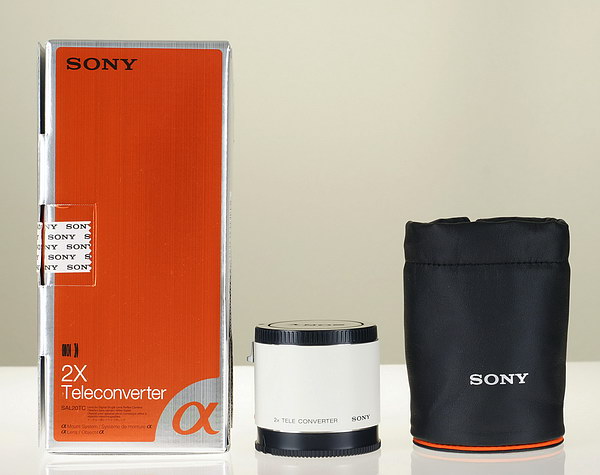 |
| 2.0X box and contents. |
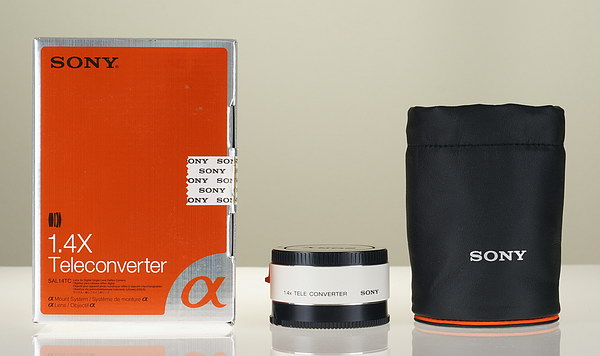 |
| 1.4X box and contents. |
 |
| Side shots |
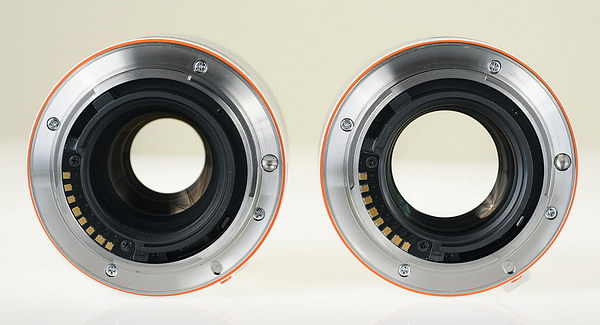 |
| Rear view |
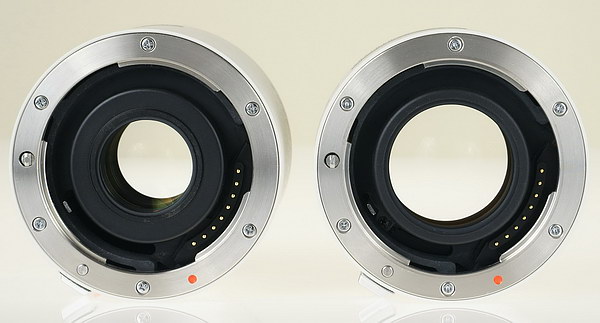 |
| Front. |
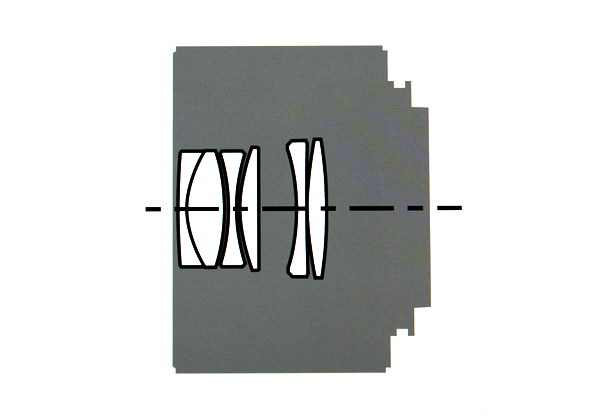 |
| 2.0 X-ray view, Sony screen grab. |
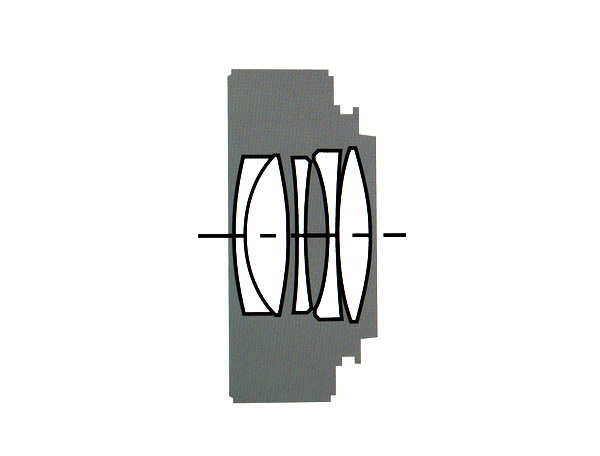 |
| 1.4 X-ray view, Sony screen grab. |
More tidbits: Make sure you fasten these to your lens and camera correctly, otherwise you won’t get proper metering or autofocus. The proper mounting sequence is: mount the TC on the lens, then mount it on your camera. Also, make sure the little lever on the TC snaps into position, or you won’t get AF, like I did. Just re-mount and everything should be fine.
You cannot “stack” these teleconverters, meaning mounting one on top of the other, they’re designed so you physically can’t do it.
It appears spherical aberration is introduced by the Sony teleconverters on the 70-200mm F/2.8 G SSM at the widest available aperture.
Minimum focusing distances stay the same with or without the teleconverters as measured from the film or sensor plane.
Magnification is 1.4X or 2.0X that of the lens used.
_____________________________________________________________________________
Let’s start off with a few pictures with the Sony 70-200mm F/2.8 lens alone, and with the TCs added.
 |
| 200mm with no teleconverter. |
 |
| 200mm with 1.4X teleconverter, for 280mm. |
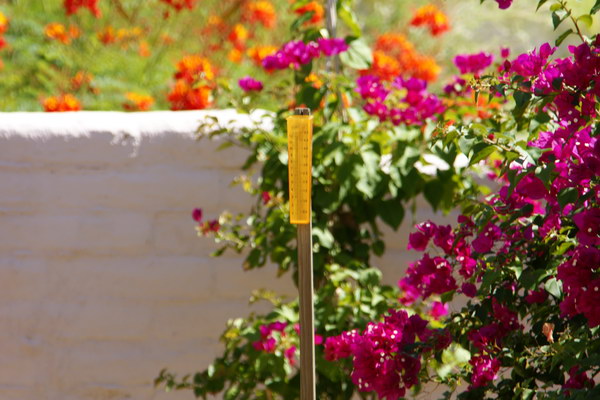 |
| 200mm with 2.0X teleconverter, for 400mm. |
You are going from 200mm, 280mm and 400mm. Or if you’re using an APS-C camera, 300mm, 420mm and 600mm in 35mm terms.
Below we have some sample crops using the 1.4X.
The distance is about 50ft (15m) from the camera to the book and cloth scene. All comparison shots were taken indoors to eliminate heat shimmer, which is a big problem in the summer here in southern AZ, and wreaks havoc on detailed comparison tests.
|
F/4 200mm with 1.4X TC
|
 |
|
F/5.6 200mm with 1.4X TC
|
 |
|
F/8 200mm with 1.4X TC
|
 |
|
F/11 200mm with 1.4X TC
|
 |
The 100% cropped scene above shows a soft looking F/4, but much sharper one stop down at F/5.6 and F/8 seems to be the sharpest. F/11 looks good also. It appears the Sony teleconverters are introducing veiling haze (spherical aberration) (on the 70-200mm) at the largest available corrected aperture for that converter, but through the veiling haze you still have plenty of detail present.
Now for the 2.0X teleconverter.
|
F/5.6 200mm with 2.0X TC
|
 |
|
F/7.1 200mm with 2.0X TC
|
 |
|
F/8 200mm with 2.0X TC
|
 |
|
F/11 200mm with 2.0X TC
|
 |
Again, soft looking wide open at F/5.6 due to spherical aberration. Less than a full stop down it almost disappears and looks good at F/7.1, and seems sharpest at F/8. Spherical aberration is more noticeable using the 2.0X.
Below are comparisons of no TC upsampled to the size of the 1.4X to the right.
|
No TC, upsampled to match 1.4X.
|
Using the 1.4X TC
|
|
| F/4 |  |
 |
| F/5.6 |
 |
 |
| F/8 |
 |
 |
|
F/11
|
 |
 |
The little 1.4X does a real good job here. Other than the top shot, things look pretty sharp stopped down. The 1.4x wins here, but not by a big margin.
Next, the 2.0X teleconverter and comparisons to the 1.4X upsampled image.
|
Using the 1.4X TC, upsampled to match 2.0X size
|
Using the 2.0X TC
|
|
|
F/5.6
|
 |
 |
|
F/8
|
 |
 |
|
F/11
|
 |
 |
I don’t need to say much here. Things look better a stop down, but it really looks like you’d be just as well off by leaving the 2.0X in the bag.
Here’s an extreme comparison of no TC against the 2.0X.
|
No TC, upsampled 200% to match image size of 2.0X TC F/5.6
|
Using the 2.0X TC F/8
|
|
|
F/5.6-F/8
|
 |
 |
Clearly here you’re a little better off with the 2.0X TC, though remember these image are 100% crops. Small to medium sized prints would not show any difference.
_____________________________________________________________________________
Bonus section!
Now for some samples between the 70-300mm G SSM and the 70-200mm G SSM with the 1.4X TC.
|
70-300mm G SSM @280mm
|
70-200mm G SSM @200mm with 1.4X TC
|
|
|
F/5.6
|
 |
 |
|
F/8
|
 |
 |
It looks like you’re still a little better off with the 70-200mm, but the much less expensive 70-300mm is doing a good job.
More comparisons, read the text and headings carefully.
|
70-300mm @280mm upsampled to 400mm F/8
|
70-200mm @ 200mm Using the 2.0X TC F/8
|
|
|
F/8
|
 |
 |
The 70-200mm is still a little sharper with the 2.0X TC attached than the 70-300mm is, set at 280mm.
|
70-300mm G SSM @ 200mm F/8
|
70-200mm G SSM @ 200mm F/5.6
|
|
|
F/8-F/5.6
|
 |
 |
A surprise here for me. Obviously, the 70-200mm G SSM is very sharp, but it’s also much bigger and heavier and—$1000 more. No teleconverters were used in the crops above. The 70-300mm is sharpest at F/8, the 70-200mm is sharpest at F/5.6. The 200mm range is not the absolute sharpest for the 70-300mm.
|
70-300mm G SSM @ 280mm
|
70-200mm G SSM @ 200mm with 1.4X
|
|
|
F/8
|
 |
 |
Sony 500mm reflex shot below.
| Sony 500mm reflex F/8 lens |
 |
I like the 1.4X TC, it does what it’s supposed to do, and that’s providing extra focal length with real resolution increases. It comes at a cost though, and that’s not just one stop of light loss, it’s really two stops (or 3 with the 2.0X) as you can see above. You need to stop down one extra stop to clear up the spherical aberration. The 2.0X isn’t so useful on the zoom lens, maybe it is on the 300mm F/2.8, I haven’t been able to review that lens yet.